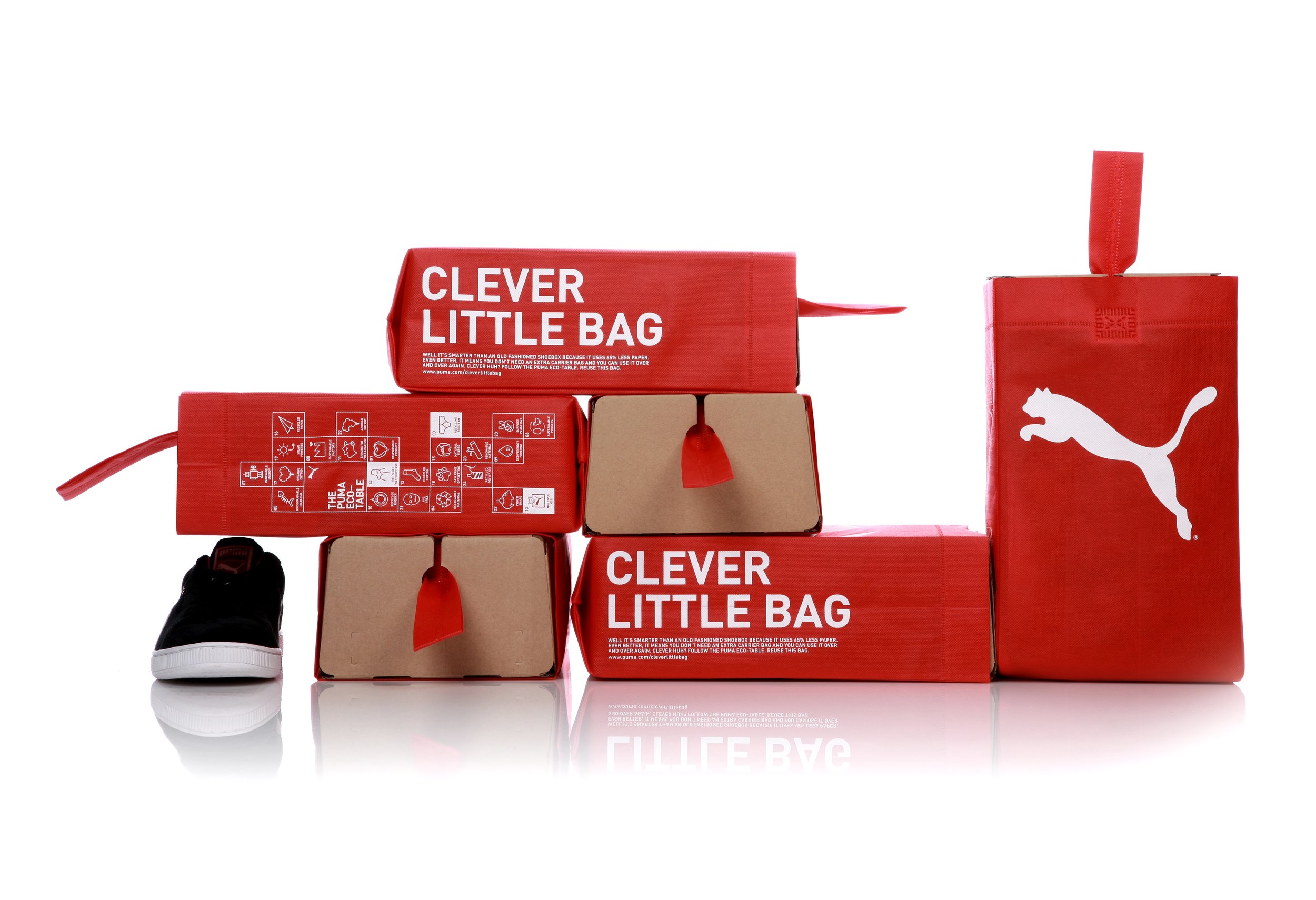Case Study: Puma Clever Little Bag
Puma approached San Francisco based design studio Fuseproject to redesign their shoe box, polybags, and hang tags to be more sustainable. Fuseproject performed a full audit of the packaging’s life cycle, from manufacturing to distribution to retail, in order to fully understand the environment they were designing for.
The end solution was a brilliant piece of packaging design. For the shoe box a new frame reduces cardboard usage by 65%, and the recycled PET bag that eliminates any need for a shopping bag. Any design can reduce material use, but the brilliance of this design was that it required no changes in Puma's existing global infrastructure. Shipping, assembly, warehousing, and flow the the retail stores could all carry on with little to no modifications. The end result could even be stacked in outlet stores in the same way as the original boxes.
Most people don’t realize this redesign encompassed t-shirt packaging as well, and a new hang tag uses 80% less material than the previous iteration, while also saving time on the factory assembly floor. In addition the new poly bag is made of a compostable material.
1. How does the form of the package relate to the packaging substrate?
The form is close enough to the existing shoe box to suggest familiarity, but different enough to allude at something novel and exciting.
2. How does the materiality of the package speak to the packaging substrate?
There is no direct reference to the pulp in the cardboard, which is fine because cardboard is such a ubiquitous material. However I think it was probably lost on most consumers that the bag was made from recycled PET. Perhaps a thicker and more tactile weave of nylon strands would communicate the origin of the material, and thereby encourage people to recycle the bag.
3. Does the tactile feel of the material suggest communicate its proper end disposal?
People would know to recycle the cardboard, and the PET bag feels sturdy enough that people would want to reuse them. I’ve actually seen people carrying these bags around the New York subway system almost a decade after it’s implementation. However despite the graphic messaging most people would probably not understand that the bag was made of plastic, and not know to recycle it.
4. How did the design achieve tangible sustainability gains?
Fuseproject's impressive research brought about tremendous sustainability gains. Fuse deserves incredible accolades here, as does Puma for encouraging a holistic solution rather than a service level redesign. The sustainability numbers are astounding when we realize that at the time of the redesign Puma was shipping over 60 million shoe boxes each year.
5. How was the design implemented on a large scale?
Due to the support of Puma's massive global infrastructure, this design was a triumph of implementation.
6. What made the design cost-effective? And if the design was not cost-effective, how was a roadmap put in place to make it so?
Again the success in making the design cost-effective comes back to Fuseproject's research. Through this research the Clever Little Bag was built so that no expensive changes in infrastructure were needed.
7. How does the design anticipate future infrastructure changes?
The design imagines how retail could do away with excess packaging. However, I'm not sure how the design would function with ecommerce, as there may be a need for secondary packaging around the bag. I suspect you could just slap a shipping label on the bag that seals shut the opening, but most consumers would probably want something a little more airtight.
8. Did the design result in a positive brand story?
This design resulted in a frenzy of positive PR, and almost a decade later it remains the go to example of a well executed sustainable packaging redesign. Unfortunately Puma discontinued the design after several years without much of an explanation.










